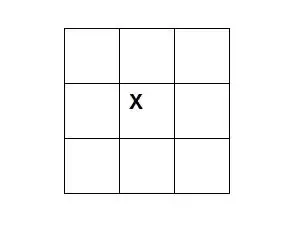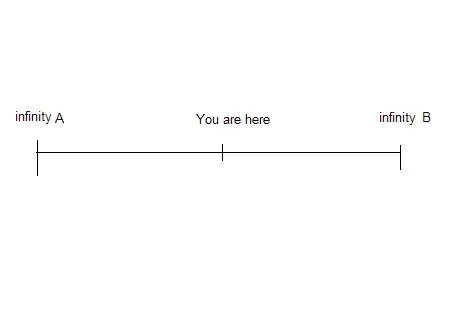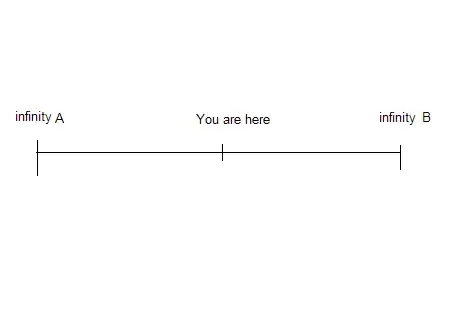Second Update: I see that some answers that reference my image are more closely answering my question. Here is a second image to clarify my point.
Take this image representing a checkerboard like configuration. If I asked you to move the X negative 1 space it would be impossible. You would have to make a guess as to which direction is negative. However, I can ask you to move the X 1 space/unit, since moving to any square from the center would satisfy moving 1 space/unit.
But wait! Once you complete moving the X 1 space/unit; I could now follow up and request you move negative 1 space, since you have now already travelled in one direction. Now you are able to negate the original request by 1 space/unit
Therefore negative doesn't exists until you have already begun moving in some direction/unit/space/time/apples.

update

Maybe this helps illustrate my point.
In this image there is a line, going either direction will take you to infinity (A or B), the number of spaces you move is always a positive number. If I moved 20 widgets closer to infinity A. or I moved 20 widgets closer to infinity B. So, negative numbers don't exist and are only positive numbers that are increasing in the opposite direction
Negative indicates the direction of travel on a line. the measure of movements will always be positive.
Does a negative number really exist? I can't have -1 apples. I can only imagine I had an apple when I really did not. Thus, in reality I would have -1 apple as compared to my imagination.
didn't know how to tag this


something". P.S. No matter how many steps you take in whatever direction, you did not get "closer to infinity". – Arturo Magidin Feb 01 '11 at 20:17